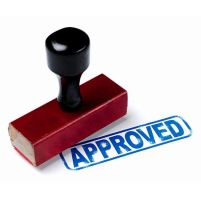Is Gulf Seafood Really Safe for Children and Pregnant Women?
Tuesday, December 20, 2011

Since the BP oil spill last year devastated the Gulf region, the federal government has encouraged the purchase of local seafood to help fishermen get back on their feet. But a new study raises the question of whether this fish is safe to consume, especially for mothers and adolescents.
Using information obtained through the Freedom of Information Act, researchers at the Natural Resources Defense Council found that the Food and Drug Administration is allowing 100 to 10,000 times more carcinogenic polycyclic aromatic hydrocarbons (PAHs) in seafood than what is considered safe. Some studies have shown that fetal exposure to high levels of PAHs can lead to lower IQs and greater risk of childhood diabetes.
This news is troubling because it means the FDA’s risk assessment is not protecting “those most vulnerable to the effects of these chemicals, such as young children, pregnant women and high-consumption seafood eaters,” writes Brad Jacobson at AlterNet.
Robert W. Dickey of the FDA Gulf Coast Seafood Laboratory has defended the FDA’s approval of Gulf seafood by contending that “chemical risk assessments tend to be conservative with intentional bias on the side of safety.”
-Noel Brinkerhoff, David Wallechinsky
Why Is the FDA Saying It's OK to Eat Seafood 10,000 Times Over the Safe Limit for Dangerous Carcinogens? (by Brad Jacobson, AlterNet)
Letter and Response: FDA Risk Assessment of Seafood Contamination after the BP Oil Spill (Environmental Health Perspectives) (pdf)
Military Steps in to Buy Up Gulf Seafood (by Noel Brinkerhoff, AllGov)
Lab Chosen to Test Oil Spill Water and Animal Samples Has Ties to BP (by Noel Brinkerhoff, AllGov)
- Top Stories
- Unusual News
- Where is the Money Going?
- Controversies
- U.S. and the World
- Appointments and Resignations
- Latest News
- What If China Invaded the United States?
- Donald Trump Has a Mental Health Problem and It Has a Name
- Trump Goes on Renaming Frenzy
- Trump Deports JD Vance and His Wife
- Trump Offers to Return Alaska to Russia






Comments